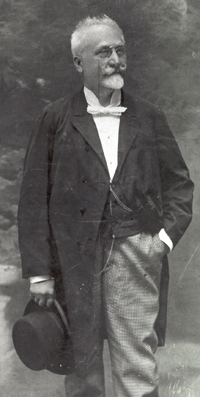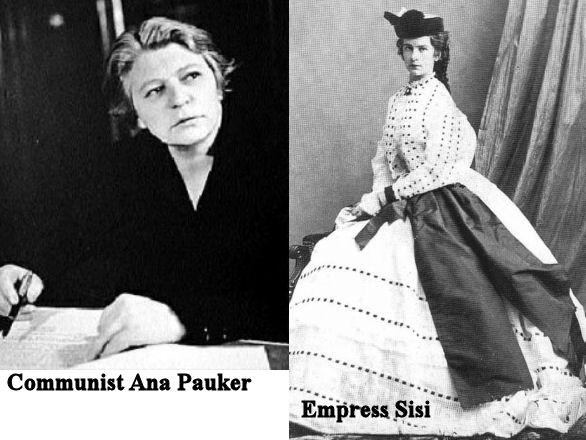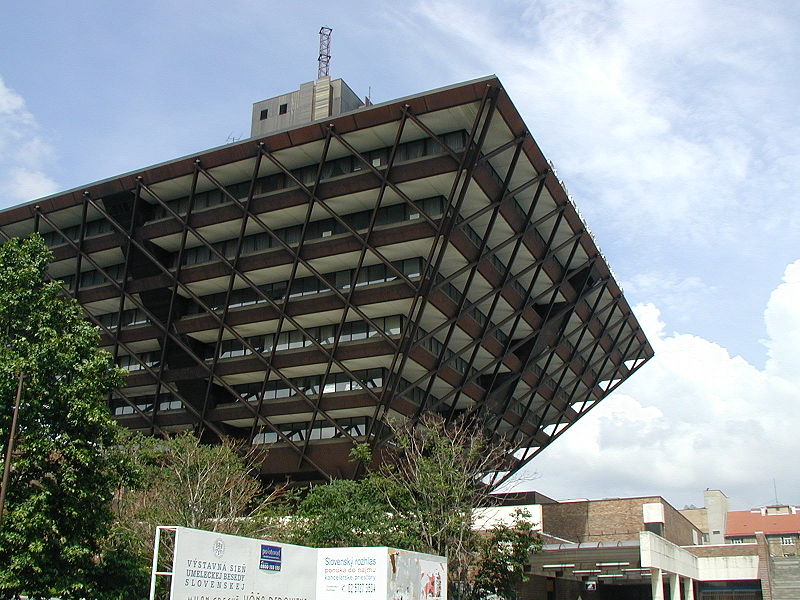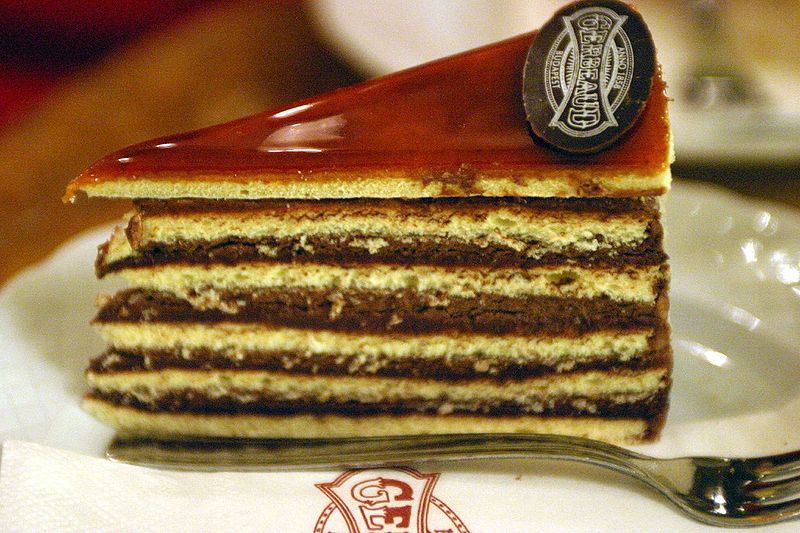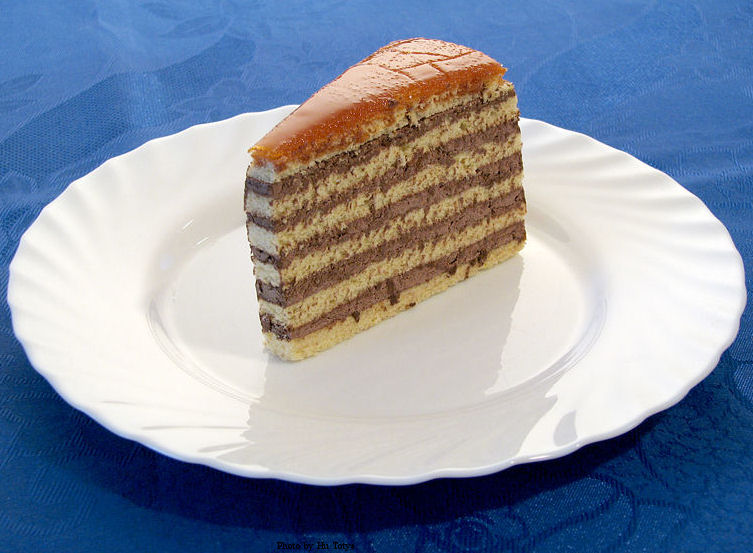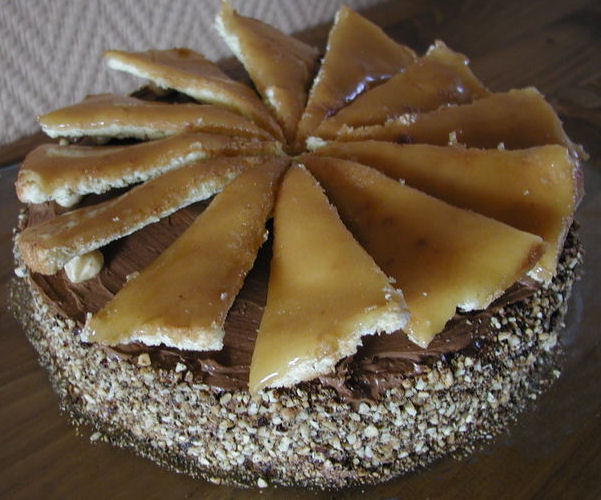Famous worldwide and with 100 ways to make it, Dobos Torte has become one of Hungary’s successful culinary ambassadors.
The original creation of Jozsef C. Dobos, a Hungarian pastry chef, it made its debut at the National General Exhibition of Budapest in 1885. In light of its outstanding success, it was most appropriate that Hungary’s King and Queen, Franz Joseph and Elizabeth (Emperor and Empress of Austria too) were among the first to appreciate its qualities.
Dobos Torte is a dessert that expresses Hungary’s aristocratic tone before the social revolution and devastation of World War I and its aftermath. It is full of refinement, elegance, and good taste. Disciplined lines, strong and well-matched colors, a smooth and shiny glaze atop, all come together in this dessert that nourishes the nobler aspirations of the soul, while delighting the palate.
How well this cake fits with the noble poise of an Empress Sisi or Empress Zita. How it clashes with the brutal persona of Romanian communist Ana Pauker or a Cristina Kirchner. What a perfect fit with a dignified Budapest cafe, the Festetics Palace in Keszthely or the Esterházy one in Fertőd. How it fits not at all with communist brutalist architecture. Because it evokes a culture and a society imbued with order, honor, and nobility, Dobos Torte is a delightful and powerful rebuke to contemporary mediocrity, vulgarity and brutality.
The Dobos Torta is a five layer sponge cake, filled with a rich chocolate buttercream and topped with thin wedges of caramel. The recipe was a secret until Dobos retired in 1906 and gave the recipe to the Budapest Confectioners’ and Gingerbread Makers’ Chamber of Industry, providing that every member of the chamber can use it freely.
Equipment
- 2 baking sheets
- 9” (23cm) springform tin and 8” cake tin, for templates
- mixing bowls (1 medium, 1 large)
- a sieve
- a double boiler (a large saucepan plus a large heat-proof mixing bowl which fits snugly over the top of the pan)
- a small saucepan
- a whisk (you could use a balloon whisk for the entire cake, but an electric hand whisk or stand mixer will make life much easier)
- metal offset spatula
- sharp knife
- a 7 1/2” cardboard cake round, or just build cake on the base of a springform tin.
- piping bag and tip, optional
Prep times
- Sponge layers 20 mins prep, 40 mins cooking total if baking each layer individually.
- Buttercream: 20 mins cooking. Cooling time for buttercream: about 1 hour plus 10 minutes after this to beat and divide.
- Caramel layer: 10-15 minutes.
- Assembly of whole cake: 20 minutes
Sponge cake layers
- 6 large eggs, separated, at room temperature
- 1 1/3 cups confectioner’s sugar, divided
- 1 teaspoon vanilla extract
- 1 cup plus 2 tablespoons sifted cake flour
- pinch of salt
Chocolate Buttercream
- 4 large eggs, at room temperature
- 1 cup sugar
- 4oz bakers chocolate or your favorite dark chocolate, finely chopped
- 2 sticks plus 2 tablespoons butter, at room temperature.
Caramel topping
- 1 cup sugar
- 12 tablespoons water
- 8 teaspoons lemon juice
- 1 tablespoon neutral oil (e.g. grapeseed, sunflower, canola)
Finishing touches
- a 7” cardboard round
- 12 whole hazelnuts, peeled and toasted
- ½ cup peeled and finely chopped hazelnuts
Directions for the sponge layers:
NB. The sponge layers can be prepared in advance and stored interleaved with parchment and well-wrapped in the fridge overnight.
- Position the racks in the top and centre thirds of the oven and heat to 400F (200C).
- Cut six pieces of parchment paper to fit the baking sheets. Using the bottom of a 9″ (23cm) springform tin as a template and a dark pencil or a pen, trace a circle on each of the papers, and turn them over (the circle should be visible from the other side, so that the graphite or ink doesn’t touch the cake batter.)
- Beat the egg yolks, 2/3 cup (81g) of the confectioner’s (icing) sugar, and the vanilla in a medium bowl with a mixer on high speed until the mixture is thick, pale yellow and forms a thick ribbon when the beaters are lifted a few inches above the batter, about 3 minutes. (You can do this step with a balloon whisk if you don’t have a mixer.)
- In another bowl, using clean beaters, beat the egg whites until soft peaks form. Gradually beat in the remaining 2/3 cup (81g) of confectioner’s (icing)sugar until the whites form stiff, shiny peaks. Using a large rubber spatula, stir about 1/4 of the beaten whites into the egg yolk mixture, then fold in the remainder, leaving a few wisps of white visible. Combine the flour and salt. Sift half the flour over the eggs, and fold in; repeat with the remaining flour.
- Line one of the baking sheets with a circle-marked paper. Using a small offset spatula, spread about 3/4cup of the batter in an even layer, filling in the traced circle on one baking sheet. Bake on the top rack for 5 minutes, until the cake springs back when pressed gently in the centre and the edges are lightly browned. While this cake bakes, repeat the process on the other baking sheet, placing it on the centre rack. When the first cake is done, move the second cake to the top rack. Invert the first cake onto a flat surface and carefully peel off the paper. Slide the cake layer back onto the paper and let stand until cool. Rinse the baking sheet under cold running water to cool, and dry it before lining with another parchment. Continue with the remaining papers and batter to make a total of six layers. Completely cool the layers. Using an 8″ springform pan bottom or plate as a template, trim each cake layer into a neat round. (A small serrated knife is best for this task.)
Directions for the chocolate buttercream:
NB. This can be prepared in advance and kept chilled until required.
- Prepare a double-boiler: quarter-fill a large saucepan with water and bring it to a boil.
- Meanwhile, whisk the eggs with the sugar until pale and thickened, about five minutes. You can use a balloon whisk or electric hand mixer for this.
- Fit bowl over the boiling water in the saucepan (water should not touch bowl) and lower the heat to a brisk simmer. Cook the egg mixture, whisking constantly, for 2-3 minutes until you see it starting to thicken a bit. Whisk in the finely chopped chocolate and cook, stirring, for a further 2-3 minutes.
- Scrape the chocolate mixture into a medium bowl and leave to cool to room temperature. It should be quite thick and sticky in consistency.
- When cool, beat in the soft butter, a small piece (about 2 tablespoons/30g) at a time. An electric hand mixer is great here, but it is possible to beat the butter in with a spatula if it is soft enough. You should end up with a thick, velvety chocolate buttercream. Chill while you make the caramel topping.
Directions for the caramel topping:
- Choose the best-looking cake layer for the caramel top. To make the caramel topping: Line a jellyroll pan with parchment paper and butter the paper. Place the reserved cake layer on the paper. Score the cake into 12 equal wedges. Lightly oil a thin, sharp knife and an offset metal spatula.
- Stir the sugar, water and lemon juice in a small saucepan. Bring to a boil over a medium heat, stirring often to dissolve the sugar. Once dissolved into a smooth syrup, turn the heat up to high and boil without stirring, swirling the pan by the handle occasionally and washing down any sugar crystals on the sides of the pan with a wet brush until the syrup has turned into an amber-coloured caramel.
- The top layer is perhaps the hardest part of the whole cake so make sure you have an oiled, hot offset spatula ready. The toffee will set very, very quickly—so work fast to spread it. Immediately pour all of the hot caramel over the cake layer. You will have some leftover carmel. Using the offset spatula, quickly spread the caramel evenly to the edge of the cake layer. Let cool until beginning to set, about 30 seconds. Using the tip of the hot oiled knife (keep re-oiling this with a pastry brush between cutting), cut through the scored marks to divide the caramel layer into 12 equal wedges. Cool another minute or so, then use the edge of the knife to completely cut and separate the wedges using one firm slice movement (rather than rocking back and forth which may produce toffee strands). Cool completely.
Assembling the Dobos
- Divide the buttercream into six equal parts.
- Place a dab of chocolate buttercream on the middle of a 7 1/2” cardboard round and top with one cake layer. Spread the layer with one part of the chocolate icing. Repeat with 4 more cake layers. Spread the remaining icing on the sides of the cake.
- Optional: press the finely chopped hazelnuts onto the sides of the cake.
- Propping a hazelnut under each wedge so that it sits at an angle, arrange the wedges on top of the cake in a spoke pattern. If you have any leftover buttercream, you can pipe rosettes under each hazelnut or a large rosette in the centre of the cake. Refrigerate the cake under a cake dome until the icing is set, about 2 hours. Let slices come to room temperature for the best possible flavor
You can store the Dobos Torte at room temperature. Recipe from: http://thedaringkitchen.com/sites/default/files/u11/34_Dobos_Torta_-_DB.pdf which was taken from Rick Rodgers’ cookbook Kaffeehaus: Exquisite Desserts from the Classic Caffés of Vienna, Budapest, and Prague.
